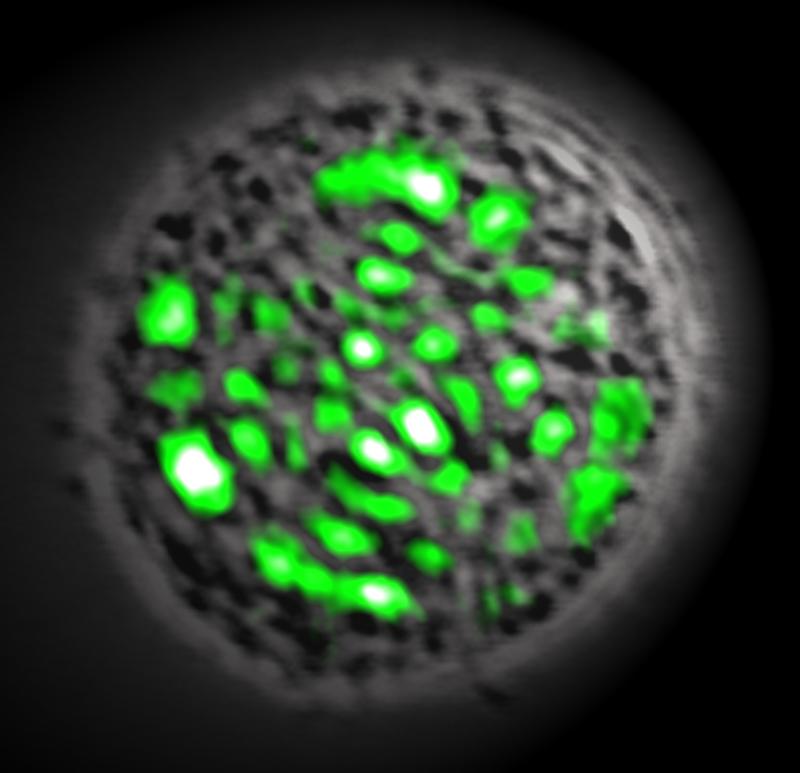Science News
Living Lasers
June 13, 2011

An article titled “Single-cell biological lasers” was published online yesterday in the journal Nature Photonics. Looking at headlines today, perhaps “It’s alive!” would have been a better descriptor.
Lasers were first developed about 50 years ago and generally use synthetic materials such as crystals, dyes and purified gases. But now Malte Gather, PhD, and Seok Hyun Yun, PhD, at the Wellman Center for Photomedicine at Massachusetts General Hospital, describe how a single living cell genetically engineered to express green fluorescent protein (GFP) can be used to amplify photons into nanosecond-long pulses of laser light.
“Part of the motivation of this project was basic scientific curiosity,” says Malte. “In addition to realizing that biological substances had not played a major role in lasers, we wondered whether there was a fundamental reason why laser light, as far as we know, does not occur in nature or if we could find a way to achieve lasing in biological substances or living organisms.”
The investigators chose GFP for their exploration of those questions because the protein—originally found in a species of jellyfish called Aequorea Victoria—can be induced to emit light without the application of additional enzymes. Its properties are well understood, and there are established techniques to genetically program many organisms to express GFP.
To determine the protein's potential for generating laser light, the researcher first assembled a device consisting of an inch-long cylinder, with mirrors at each end, filled with a solution of GFP in water. After first confirming that the GFP solution could amplify input energy into brief pulses of laser light, the researchers estimated the concentration of GFP required to produce the laser effect.
Then things became interesting, according to Nature News:
The team engineered human embryonic kidney cells to produce GFP, then placed a single cell between two mirrors to make an optical cavity just 20 micrometers across. When they fed the cell pulses of blue light, it emitted a directional laser beam visible with the naked eye — and the cell wasn't harmed.
“While the individual laser pulses last for only a few nanoseconds, they are bright enough to be readily detected and appear to carry very useful information that may give us new ways to analyze the properties of large numbers of cells almost instantaneously,” says Yun. “And the ability to generate laser light from a biocompatible source placed inside a patient could be useful for photodynamic therapies, in which drugs are activated by the application of light, or novel forms of imaging.”
Science NOW explains one possibility with these new, living lasers:
Built into a single cell, the laser might one day be used for light-based therapeutics, perhaps killing cancer cells deep inside the body.
Image: Nature Photonics and Malte Gather